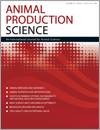Ver ítem
- xmlui.general.dspace_homeCentros Regionales y EEAsCentro Regional Patagonia NorteEEA BarilocheArtículos científicosxmlui.ArtifactBrowser.ItemViewer.trail
- Inicio
- Centros Regionales y EEAs
- Centro Regional Patagonia Norte
- EEA Bariloche
- Artículos científicos
- Ver ítem
What do domestic livestock eat in northern Patagonian rangelands?
Resumen
The Patagonian rangelands are dominated by steppes interspersed with meadows (locally called mallines), which are small but permanently humid areas, characterised by high spring–summer quality and productivity of grasses and grasslikes. The region’s main economic activity is sheep ranching, either alone or mixed with goats and/or cattle, using horses as transportation animals. Overstocking has been signalled as one of the causes of rangeland degradation
[ver mas...]
The Patagonian rangelands are dominated by steppes interspersed with meadows (locally called mallines), which are small but permanently humid areas, characterised by high spring–summer quality and productivity of grasses and grasslikes. The region’s main economic activity is sheep ranching, either alone or mixed with goats and/or cattle, using horses as transportation animals. Overstocking has been signalled as one of the causes of rangeland degradation in this region. Knowledge of botanical composition of livestock diets provides valuable information helping in the design of management strategies to improve or maintain the forage resource. With this objective we studied the dietary botanical composition of domestic livestock on Patagonian ranches with and without mallines, at different seasons. It was found that the differences between diets of the same herbivore species on ranches with and without mallines were greater than the differences among the diets of the different herbivores species grazing in the same type of ranch.
Grasses were the forage class most consumed by livestock in 76% of ranches without mallines and in 38% of the diets of ranches with them, with Stipa spp. being the main species consumed. Grass-like species were important in ranches with mallines, specially Juncus spp., and woody plants (Chuquiraga spp. as the most consumed) in ranches without mallines. Forbs hardly exceeded 10% in some spring diets of sheep, at both ranch types. Grasslikes constituted the major component of the spring and summer cattle diets, and constituted one-third of winter diets. For the rest of the herbivores studied, this forage class was important in spring–summer diets, but insignificant in the winter samples. Goats showed a greater use of the shrub in the less productive ranches and they were the most important consumers of shrubs on ranches with mallines during winter, which is the critical season of forage production. We conclude that the presence of mallines strongly condition the diet composition of the studied domestic herbivores. And, since the use of forage classes is different between these animal species, given a ranch type, the replacement of single-species grazing by mixed grazing can achieve the optimal possible use of the Patagonian rangelands.
[Cerrar]

Fuente
Animal Production Science 53(4) : 360-367. (2013)
Fecha
2013-02
Editorial
CSIRO Publishing
ISSN
1836-0939
Formato
pdf
Tipo de documento
artículo
Palabras Claves
Derechos de acceso
Restringido
 Excepto donde se diga explicitamente, este item se publica bajo la siguiente descripción: Creative Commons Attribution-NonCommercial-ShareAlike 2.5 Unported (CC BY-NC-SA 2.5)
Excepto donde se diga explicitamente, este item se publica bajo la siguiente descripción: Creative Commons Attribution-NonCommercial-ShareAlike 2.5 Unported (CC BY-NC-SA 2.5)

